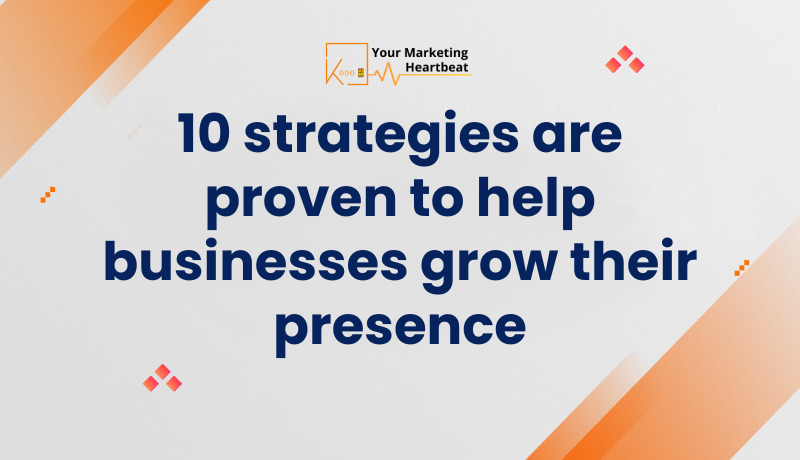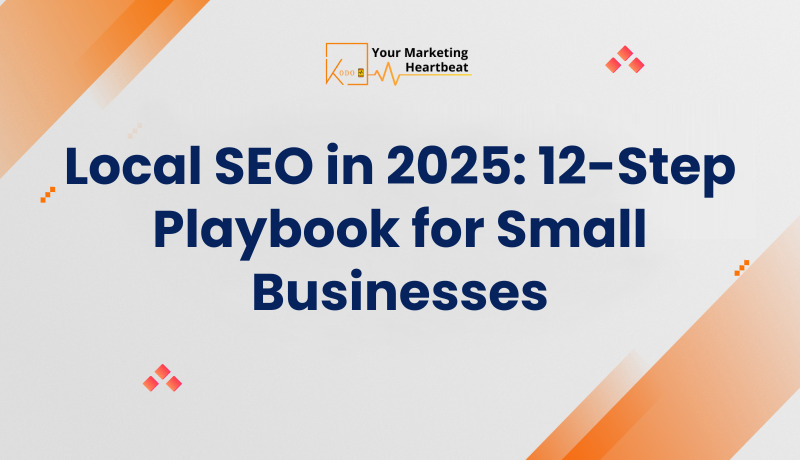10 Proven Strategies to Boost Your Business Presence & Growth
In today’s competitive market, brand awareness is more crucial than ever. It serves as the foundation for customer loyalty, trust, and ultimately, sales. When consumers recognize your brand, they are more likely to choose it over competitors. This blog post will explore 10 proven marketing strategies that can significantly enhance your brand visibility and help you connect with your target audience effectively.
1. Leverage Social Media Marketing
Social media platforms like Facebook, Instagram, and Twitter are powerful tools for increasing brand awareness. Here’s how to make the most of them:
- Choose the Right Platforms: Identify where your target audience spends their time. For instance, if you’re targeting younger consumers, platforms like TikTok or Instagram may be more effective than Facebook.
- Engaging Content: Create visually appealing and engaging content that resonates with your audience. Use images, videos, and polls to encourage interaction.
- Consistency is Key: Post regularly to keep your audience engaged and informed about your brand. Tools like Hootsuite or Buffer can help schedule posts in advance.
- Utilize Hashtags: Research relevant hashtags to expand your reach. This helps new audiences discover your content.
Example: A small bakery increased its visibility by posting daily behind-the-scenes videos of cake-making on Instagram, leading to a significant uptick in local customers.
2. Content Marketing That Educates and Engages
Content marketing is not just about selling; it’s about providing value. Here’s how to create content that boosts brand awareness:
- Diverse Content Types: Use blogs, videos, infographics, and podcasts to cater to different learning preferences.
- Educational Focus: Create content that addresses common pain points or questions in your industry. This positions your brand as a helpful resource.
- SEO Optimization: Use keywords strategically to improve search engine rankings. Tools like SEMrush can assist in keyword research.
- Shareable Content: Craft content that encourages sharing on social media, increasing its reach exponentially.
Example: A tech company launched a series of educational YouTube videos explaining complex software features, which not only informed users but also attracted new customers through organic search traffic.
3. Collaborate with Influencers
Influencer marketing can dramatically increase your brand’s visibility among targeted demographics.
- Identify Relevant Influencers: Look for influencers who align with your brand values and have an engaged following in your niche.
- Build Genuine Relationships: Approach influencers with personalized messages rather than generic pitches. Offer them something of value in exchange for promoting your brand.
- Create Authentic Content Together: Collaborate on content that feels natural and authentic rather than overly promotional.
Example: A fitness apparel brand partnered with a popular fitness influencer who shared workout routines while wearing their gear, resulting in increased sales and social media followers.
4. Invest in Paid Advertising
While organic reach is essential, paid advertising can provide a quick boost to brand awareness.
- Targeted Ads: Use platforms like Google Ads or Facebook Ads to target specific demographics based on interests and behaviors.
- A/B Testing: Experiment with different ad formats and messaging to see what resonates best with your audience.
- Retargeting Campaigns: Implement retargeting ads to remind users who have previously interacted with your brand but did not convert.
Example: An online clothing retailer used Facebook Ads targeting users who visited their site but didn’t make a purchase, resulting in a substantial increase in conversion rates.
5. Host Virtual Events or Webinars
Virtual events are an excellent way to engage directly with your audience while showcasing your expertise.
- Choose Relevant Topics: Select topics that interest your audience and relate directly to your products or services.
- Promote Your Event: Use social media, email newsletters, and partnerships to promote the event widely.
- Follow Up After the Event: Send thank-you emails along with additional resources or offers to keep the conversation going.
Example: A software company hosted a webinar on industry trends, attracting hundreds of participants who later became leads for their products.
6. Optimize for SEO
Search engine optimization (SEO) is vital for increasing visibility online.
- Keyword Research: Identify keywords relevant to your business using tools like Google Keyword Planner.
- On-page SEO Best Practices: Optimize titles, headers, and meta descriptions on your website to improve search rankings.
- Quality Backlinks: Aim to get backlinks from reputable sites within your industry to enhance credibility and authority.
Example: A local restaurant optimized its website for local SEO by adding location-based keywords, which helped it rank higher in local search results and attract more diners.
7. Build a Strong Email Marketing Strategy
Email marketing remains one of the most effective channels for building brand awareness and loyalty.
- Segment Your Audience: Tailor messages based on customer segments (e.g., new customers vs. loyal customers) for better engagement rates.
- Personalized Content: Use personalized greetings and recommendations based on past purchases or interactions.
- Engaging Newsletters: Regularly send newsletters packed with valuable content, promotions, or updates about your brand.
Example: An e-commerce store increased its open rates by personalizing subject lines based on customer preferences and past purchases.
8. Encourage User-Generated Content (UGC)
User-generated content is an effective way to build trust and authenticity around your brand.
- Create Campaigns That Encourage Sharing: Ask customers to share photos using your products on social media with a specific hashtag.
- Feature UGC on Your Channels: Highlight user-generated content on your website or social media pages to show appreciation and encourage more sharing.
- Run Contests or Giveaways: Organize contests where customers can submit their content for a chance to win prizes related to your brand.
Example: A beauty brand encouraged customers to share makeup looks using their products on Instagram, significantly boosting engagement and visibility through shared posts.
9. Leverage Partnerships and Collaborations
Strategic partnerships can introduce your brand to new audiences without significant investment costs.
- Co-Marketing Initiatives: Partner with complementary brands to create joint promotions or events that benefit both parties’ audiences.
- Cross-Promote Each Other’s Content: Share each other’s content on social media or through newsletters to tap into each other’s follower base effectively.
- Host Joint Events or Webinars: Collaborate on events that bring together both brands’ audiences for mutual benefit.
Example: A coffee shop partnered with a local bakery for a promotional event featuring coffee-and-pastry pairings, drawing in customers from both businesses’ loyal followings.
10. Utilize Data Analytics to Refine Strategies
Data analytics provides insights into what works best for enhancing brand awareness campaigns effectively.
- Track Key Metrics: Monitor metrics such as website traffic, social media engagement rates, and email open rates regularly using tools like Google Analytics or HubSpot Analytics.
- Adjust Strategies Based on Data Insights: Use data insights to refine marketing strategies continuously—what worked last quarter may not work this quarter!
- Set Clear Goals and KPIs (Key Performance Indicators): Establish measurable goals for each campaign so you can assess success accurately over time.
Example: A digital marketing agency used analytics tools to track the performance of different ad campaigns, allowing them to allocate budgets more effectively toward higher-performing ads over time.
Conclusion
Boosting brand awareness requires a multifaceted approach that combines creativity with data-driven strategies. By implementing these ten proven marketing strategies—leveraging social media marketing, engaging content marketing, influencer collaborations, paid advertising, virtual events, SEO optimization, email marketing, user-generated content encouragement, strategic partnerships, and data analytics—you can significantly enhance your brand’s visibility in today’s crowded marketplace.Remember that consistency is key; stay adaptable as trends change and continue refining your strategies based on feedback and results. Start today by implementing one strategy from this list—your future self will thank you!




April 23, 2024